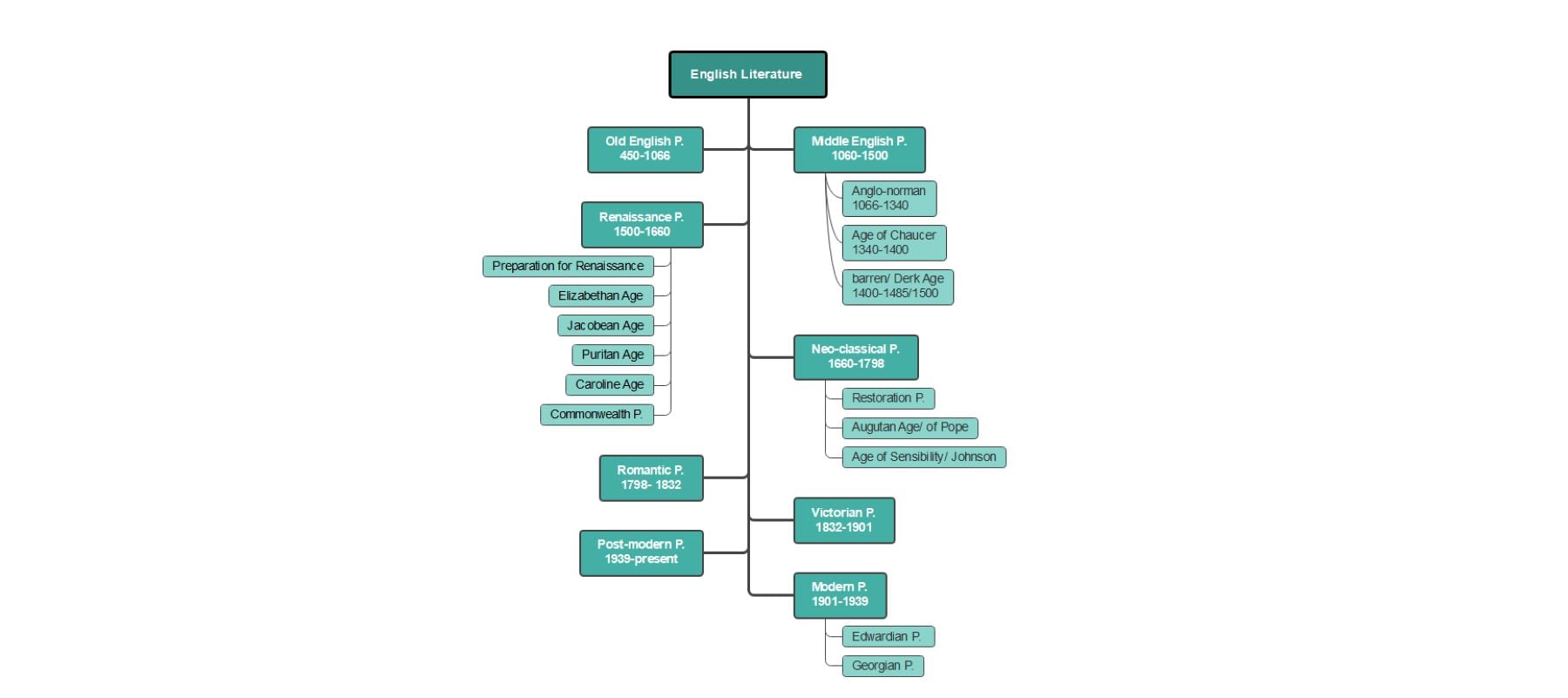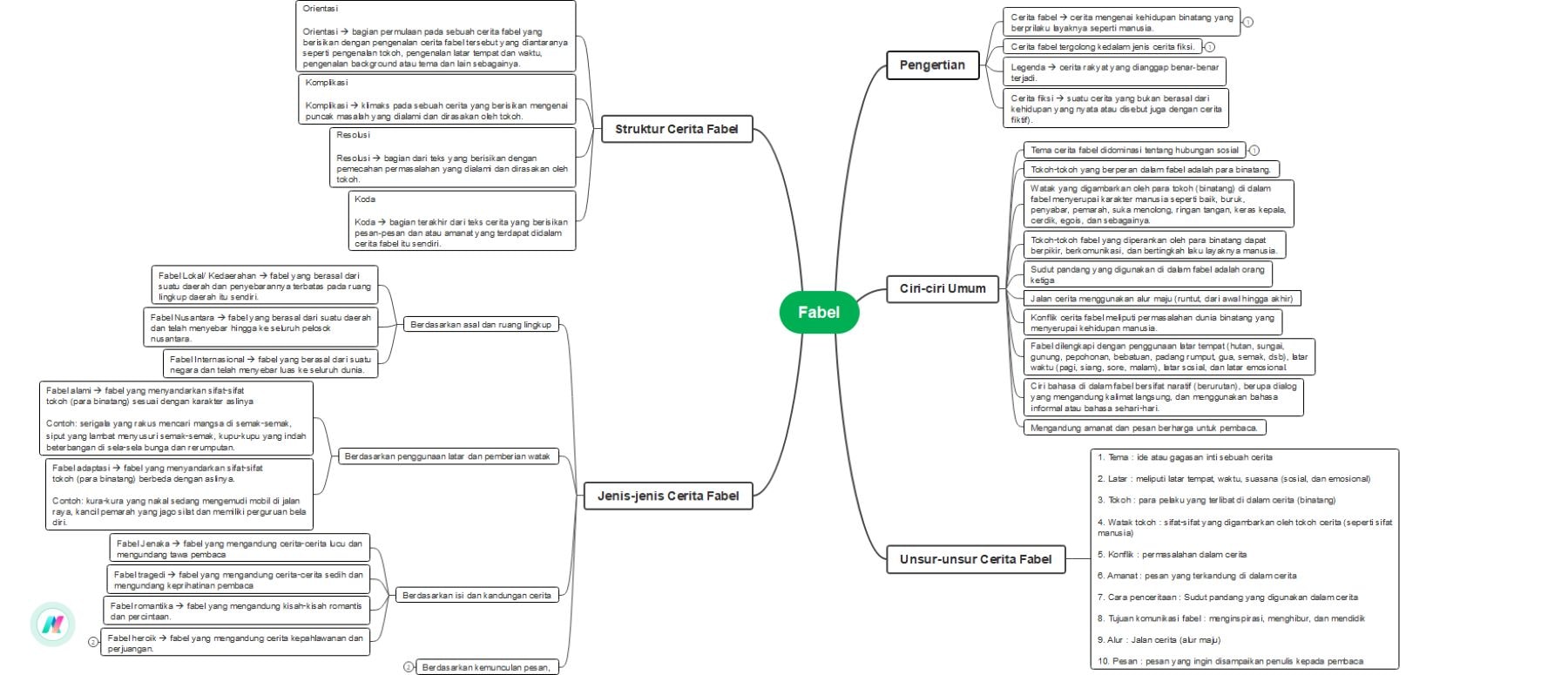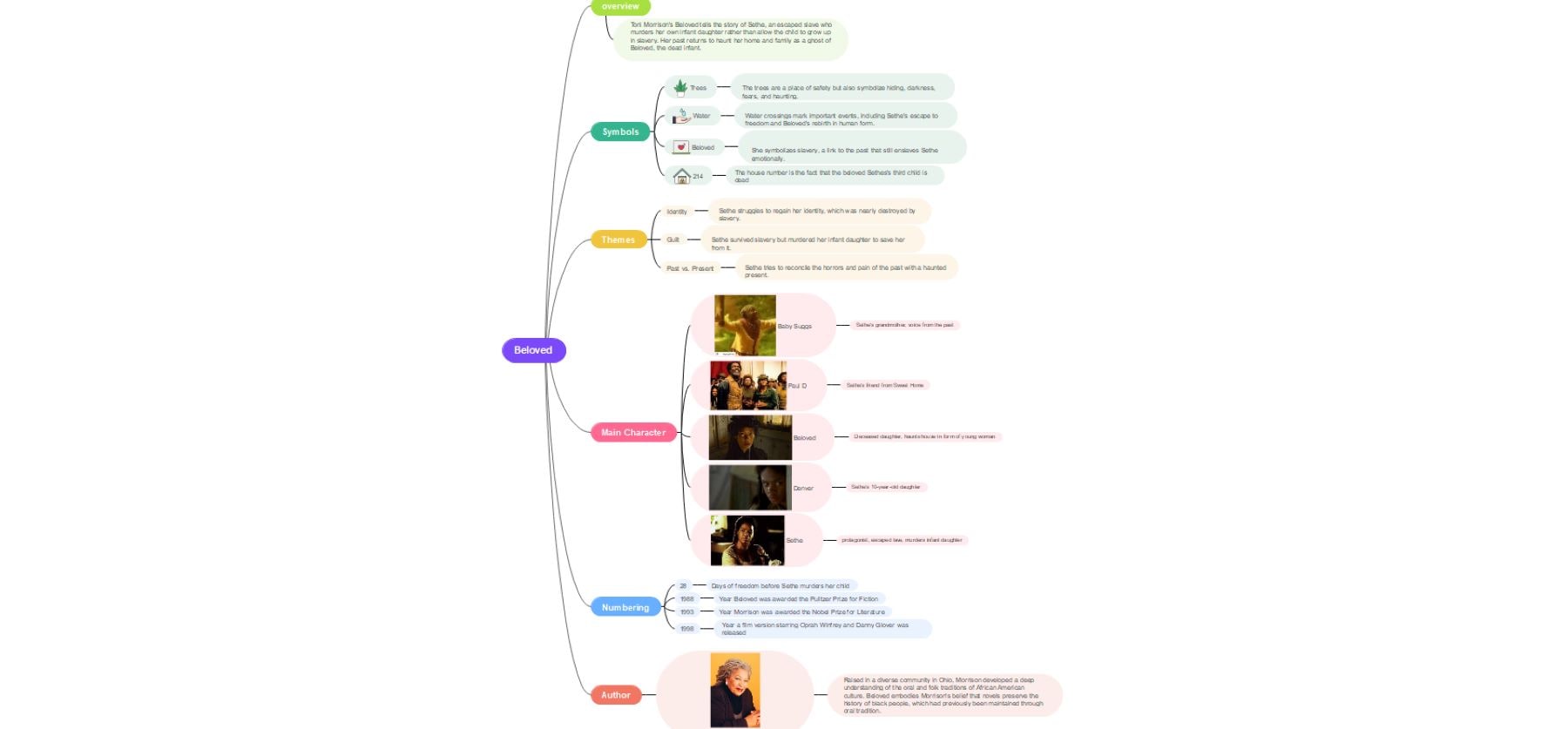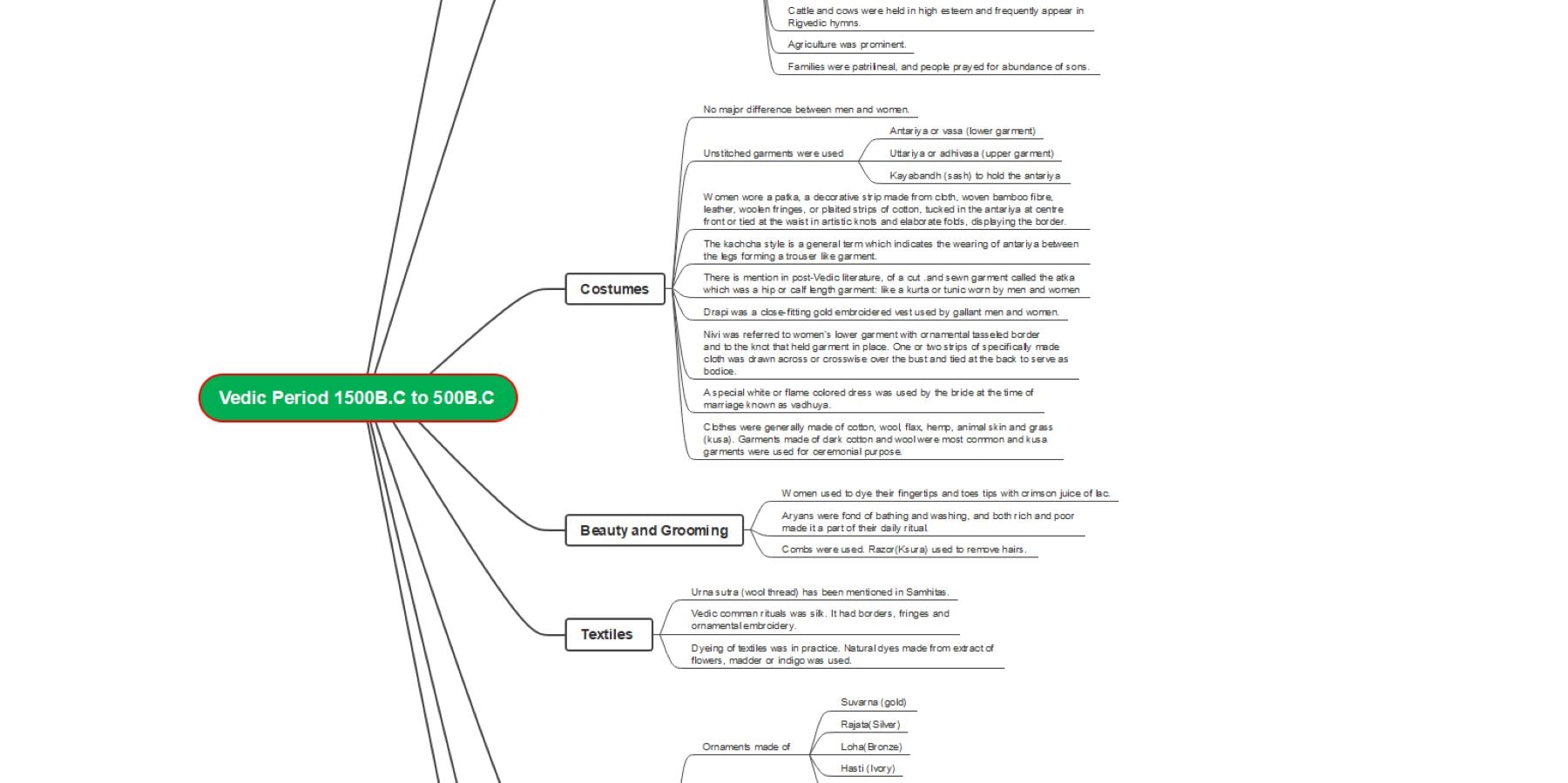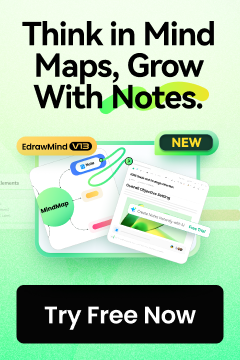With its many stories, characters, themes, and historical settings, literature is like a winding road over a wide landscape. Writing lengthy documents for school, work, or leisure can make understanding the world of literature seem like a monumental challenge.
Now, we have the mind map, a visual aid that can help you structure your thoughts, find hidden relationships, and better grasp literature. Mind maps are a powerful tool for literature lovers, and this article explores how they can be beneficial. In this article, we will discuss the importance of visual organizers and offer a variety of free templates to help you begin your literary adventures.
In this article
6 Free Literature Mind Maps Templates
If you want to engage with literature in a way that promotes deeper knowledge and creative thinking, then you should try using a mind map. Let's take a closer look at six free mind maps of literature offered by EdrawMind, analyzing their content and their potential uses:
1. Introduction to Literary Theory
This map delves into the key concepts and approaches in literary theory, featuring branches like "Major Schools of Thought" (e.g., Marxism, Feminism, Psychoanalysis), "Key Terms" (e.g., symbolism, metaphor, narrative voice), and "Applications" (e.g., analyzing a specific text).
Use Cases
Students studying literary theory can use this map to organize their knowledge, identify connections between different schools of thought, and prepare for exams. Teachers can use it to create engaging presentations and guide classroom discussions.
2. English Literature Mind Map
This mind map covers Anglo-Saxon epics to modern innovation in English literature. Key traits, noteworthy works, and exploring opportunities vary in each era.
Explore Old English heroic narratives, Chaucer's inventive Middle English storytelling, Shakespeare's nuanced Renaissance characters, and Victorian social critiques. See how Postmodern literature questions traditional forms and deals with Modern psychological problems.
Use Cases
This map is a helpful reference for students navigating different periods, genres, and authors. It can also be used for brainstorming research topics or planning a comparative literature study.
3. Fable Mind Map
This map focuses on the key elements of a fable, featuring branches like "Structure" (e.g., setting, characters, plot, moral), "Common Themes" (e.g., justice, greed, deception), and "Famous Fables" (e.g., Aesop's Fables, La Fontaine's Fables).
Use Cases
Teachers can use this map to introduce fables to young learners, highlighting their structure and themes. Students can use it to analyze specific fables, compare different versions, or even create their own.
4. Vedic Literature Mind Map
Explore the core texts - Samhitas, Brahmanas, Aranyakas, and Upanishads - each holding wisdom on themes like dharma, karma, moksha, and the interconnectedness of self and ultimate reality.
Discover how symbolism, metaphor, and allegory add depth to the texts. Witness the lasting impact of Vedic literature on Hinduism, philosophy, and global spirituality.
Use Cases
Students studying Vedic literature can use this map to arrange material, comprehend the relationships between texts, and delve further into philosophical themes. Researchers can utilize it to generate fresh study ideas or see links between many branches of Vedic thinking.
5. Mind Map of Beloved
This map will explore the depths of Toni Morrison's influential book "Beloved," with sections titled "Themes" (such as slavery, liberation, trauma, motherhood), "Literary Devices" (such as symbolism, foreshadowing, flashbacks), and "Characters" (such as Sethe, Beloved, Paul D).
Use Cases
Students studying "Beloved" can use this map to analyze characters, themes, and literary techniques, fostering a deeper understanding of the novel's complexities. Book clubs can use it to guide discussions and spark new interpretations.
6. Vedic Period Mind Map 1500 BC - 500 BC
This engaging mind map transports you to Vedic life and decoration (1500–500 BC). Explore Varna society, religion, and roles. Visualize men, women, and children wearing cotton, wool, or silk clothes, depending on their class and employment.
Visualize elaborate hairstyles, gold and silver jewelry, and colorful face paints for ceremonies and festivities. This map is a fascinating insight into a bygone age, inspiring students, academics, and everyone interested in fashion and culture.
Use Cases
Researchers can study the fascinating relationship between social structure and visual appeal, while costume designers and fashionistas draw inspiration from ancient patterns. This map lets you explore the rich Vedic Period culture as a student or history buff.
5 Benefits of Using Concept Maps
Concept maps, those dynamic visual organizers, offer so much more than just pretty boxes and arrows. They act as potent tools to fuel your learning journey, enriching understanding, boosting memory, and igniting creativity. Here are five key benefits that highlight their power:
1. Improved memory and retention.
Rote memory frequently fails when it comes to literature. On the other hand, concept maps make full use of visual representation. They use colors, images, and phrases to turn dull facts into a fascinating and unforgettable landscape.
Consider preparing for a poetry exam – a mind map depicting the poetic devices used in various poems, their effects, and their connections to the overall themes will solidify your understanding and make recall effortless.
2. Deepen Understanding
Consider reading a classic novel such as "The Great Gatsby." A literature concept map can depict character relationships, evaluate significant symbols, and plot the narrative arc.
This graphic organization explains complicated concepts, facilitates linkages between pieces, and leads to a better grasp of the story's overall message.
3. Spark Critical Thinking and Analysis
Literature isn't just about absorbing words. Concept maps encourage you to go beyond the surface, prompting critical thinking and analysis. Their flexible structure allows you to explore diverse interpretations, connect characters to historical contexts, and question underlying assumptions.
Imagine studying a Shakespearean play – a concept map lets you compare characters' motivations, analyze symbolic language, and formulate your unique interpretations.
4. Ignite Creativity and Personal Connections
Literature is a springboard for creativity. Concept maps tap into this potential, allowing you to connect the literary world to your experiences, ideas, and emotions.
Imagine studying a coming-of-age novel – a mind map can help you explore your own experiences with growing up, connect with the characters' struggles, and even generate creative writing prompts inspired by the story.
5. Organize Study Resources and Collaborate
Literature studies often involve multiple sources and perspectives. Concept maps offer a visual platform to organize notes, articles, and critical interpretations.
Share your map with classmates, compare analysis, and learn from each other's perspectives. This collaborative approach fosters deeper understanding and enriches your overall learning experience.
EdrawMind: A Paradise for Free Mind Mapping and Note-Taking
Looking for a versatile tool to capture your fleeting thoughts and organize them into insightful mind maps? Look no further than Wondershare drawMind, a free online note taking app to empower your note-taking and mind-mapping journey.
Simple yet Powerful: EdrawMind boasts a user-friendly interface, making it accessible to everyone. Whether you're a seasoned note-taker or a curious beginner, you'll find its intuitive tools and features easy to navigate.
Beyond Basic Notes: Go beyond scribbled lines and explore the power of visuals. EdrawMind lets you create rich, engaging notes with images, diagrams, and even mind maps, all within the same platform. Organize your thoughts, visualize connections, and boost your understanding with ease.
Your Inner Cartographer: Feeling overwhelmed by complex ideas? EdrawMind transforms into your mind-mapping tool. Craft dynamic, interactive mind maps to explore relationships between concepts, brainstorm solutions, and organize your thoughts in a visually stimulating way.
Free and Accessible: Worried about subscription fees? EdrawMind offers a generous free plan, allowing you to experience its core features without breaking the bank. Perfect for students, casual users, or anyone seeking a taste of its potential.
EdrawMind Working Modes
EdrawMind isn't just a single tool; it's a versatile platform that adapts to your specific needs. Let's explore its three key working modes:
- Presentation Mode: Ready to share your insights with the world? EdrawMind transforms your notes or mind maps into polished presentations. Engage your audience with visually stunning slides with transitions, animations, and speaker notes. Ideal for classroom presentations, project proposals, or sharing your knowledge with colleagues.
- Mind-Mapping Mode: Explore non-linear connections and relationships between ideas. Brainstorm freely, visualize concepts visually, and unlock deeper understanding through spatial organization. Great for generating ideas, planning projects, or analyzing complex concepts.
- Outline Mode: This mode is your go-to for structured note-taking. Think of it as a digital notebook with superpowers. Organize your thoughts with clear headings, bullet points, and sub-points. Add images, videos, and even voice notes to enrich your understanding. Ideal for lectures, meetings, or capturing research findings.
EdrawMind Key Features
EdrawMind is more than just a note-taking and mind-mapping tool. It's filled with features that allow you to capture, organize, and share your thoughts in a variety of ways. Let's explore some of its important features:
Import Files
- Easily import your previous notes and ideas onto the platform.
- Import files from various sources, including HTML, Markdown, and various mind mapping software formats, and more, to ensure a smooth transition from your current platform.
Export Files
- Images (JPG, PDF, Markdown) for easy inclusion in presentations or reports.
- Print your notes and mind maps for offline reference.
- Publish your work online as HTML or interactive web pages.
- Export to popular software like Microsoft Word, PowerPoint, and PDF for further editing.
Templates
- Overcome the blank page syndrome with a vast library of pre-designed templates.
- Find mind maps, flowcharts, diagrams, presentations, and templates.
- Customize these templates to fit your specific needs and style.
Symbols
- Use diverse symbols and graphics to enhance your visual narrative. Find the ideal icons to represent concepts, processes, and data points, making your work clear, engaging, and visually appealing.
AI Tools
- To make expert-looking graphics quickly and effortlessly, try EdrawMind and its AI-powered features, including smart drawing tools, content recommendations, and AI-generated diagrams.
Reasons to Try EdrawMind
EdrawMind beckons you to explore a world of possibilities with its intuitive, cost-effective, and efficient tools. Here's why you should give it a try:
- Simple and Easy. No more tech issues! EdrawMind features an easy-to-use interface for beginners and experts. Even for beginners to mind mapping and note-taking software, its drag-and-drop capability and intuitive structure make it easy to use.
- Economical: Be creative without spending a fortune. For students, casual users, and beginners, EdrawMind offers a large free plan to try its key features. Enjoy flexibility and affordability while Effective Time is valuable, and EdrawMind respects it. Capture, organize, and share your thoughts quickly using its simplified tools. To avoid blank page syndrome and enhance productivity, import notes, use templates, and use AI-powered suggestions.
The free plan gives you access to EdrawMind's basic mind-mapping and note-taking features. However, premium plans are tailored to satisfy the unique requirements of users seeking more advanced features and exclusive benefits. To acquire all the latest information and choose the plan that suits you best, visit the official EdrawMind pricing website.
Bottom Line
Literature mind maps help students understand complex texts, and veteran readers find deeper meaning in the written word. Visual organisers explain complex narratives and provide a holistic reading experience by showing character, theme, and story connections.
EdrawMind lets you make personalised maps, while EdrawMind lets you take notes, construct diagrams, and display your literary ideas in attractive formats.



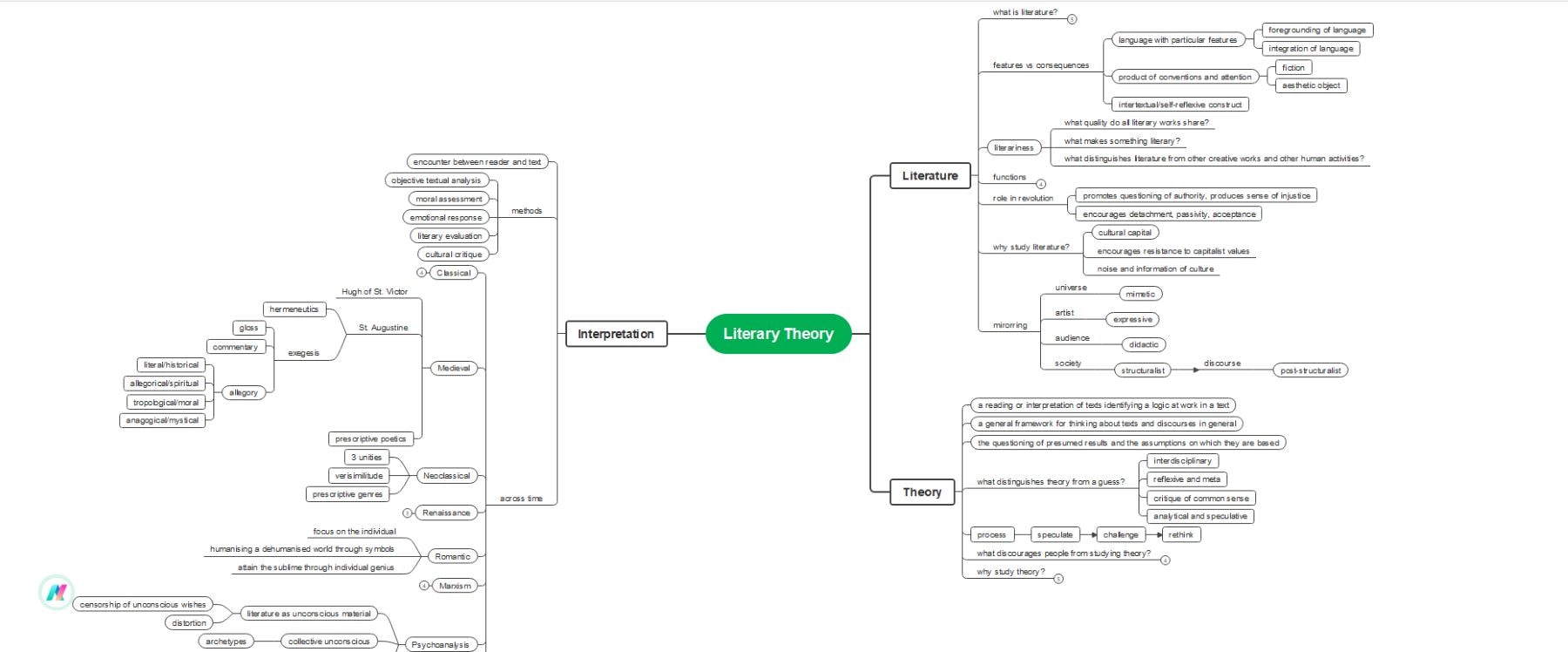
 below.
below.  below.
below. 